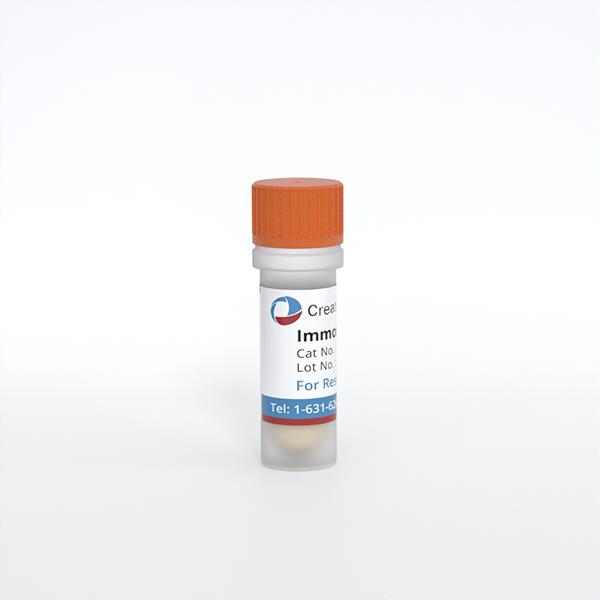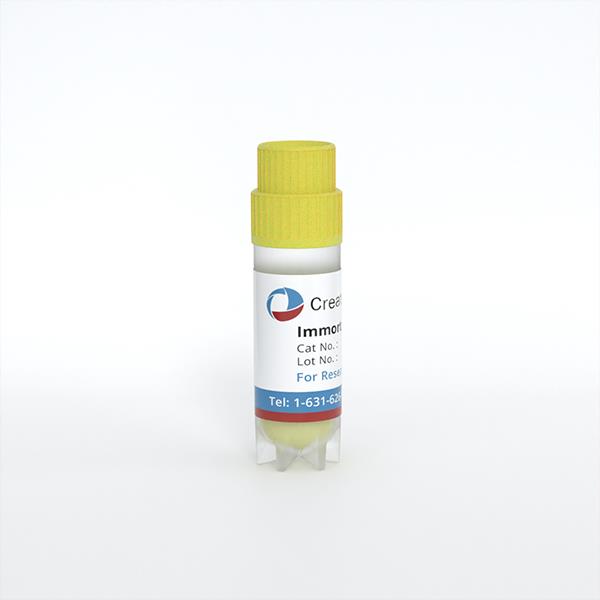
Immortalized Human Gingival Fibroblasts-hTERT
Cat.No.: CSC-I9082L
Species: Homo sapiens
Source: Gingiva
Morphology: spindle-shaped
Culture Properties: Adherent
- Specification
- Q & A
- Customer Review
Cat.No.
CSC-I9082L
Description
Gingival fibroblasts play an important role in oral wound healing and are the major constituents of the gingival connective tissue. These cells are important in testing the “biocompatibility”, or toxicity of new dental materials. In the past, toxicity tests in vitro have been performed with non-human and human malignant cell lines such as L929, CCL163, CCL171 and SaOS2. However, due to the malignancy of the described cell lines, the results may or may not be clinical relevant. The Immortalized Human Gingival Fibroblasts- hTERT have the same morphological cellular response in biocompatibility evaluation to primary human gingival fibroblasts and can thus be used to evaluate toxicity of dental materials.
Species
Homo sapiens
Source
Gingiva
Culture Properties
Adherent
Morphology
spindle-shaped
Immortalization Method
Serial passaging and transduction with recombinant lentiviruses carrying hTERT gene
Markers
Vimentin and actin
Application
For Research Use Only
Storage
Directly and immediately transfer cells from dry ice to liquid nitrogen upon receiving and keep the cells in liquid nitrogen until cell culture needed for experiments.
Note: Never can cells be kept at -20 °C.
Note: Never can cells be kept at -20 °C.
Shipping
Dry Ice.
Recommended Products
CSC-7778W HGF;Human Gingival Fibroblasts (HGF)
CIK-HT013 HT® Lenti-hTERT Immortalization Kit
CIK-HT013 HT® Lenti-hTERT Immortalization Kit
Quality Control
1. Immunofluorescence, RT-PCR and Western Blotting were used to confirm the presence of hTERT expression (PCR primers for hTERT: 5’-CGGAAGAGTGTCTGGAGCAA-3’ forward, and 5’-GGATGAAGCGGAGTCTGGA-3’ reverse) .
2. MTT assay was used to confirm the proliferative potential of the immortalized cells over the 70th passage.
2. MTT assay was used to confirm the proliferative potential of the immortalized cells over the 70th passage.
BioSafety Level
II
Citation Guidance
If you use this products in your scientific publication, it should be cited in the publication as: Creative Bioarray cat no.
If your paper has been published, please click here
to submit the PubMed ID of your paper to get a coupon.
Ask a Question
Write your own review
Related Products
Featured Products
- Adipose Tissue-Derived Stem Cells
- Human Neurons
- Mouse Probe
- Whole Chromosome Painting Probes
- Hepatic Cells
- Renal Cells
- In Vitro ADME Kits
- Tissue Microarray
- Tissue Blocks
- Tissue Sections
- FFPE Cell Pellet
- Probe
- Centromere Probes
- Telomere Probes
- Satellite Enumeration Probes
- Subtelomere Specific Probes
- Bacterial Probes
- ISH/FISH Probes
- Exosome Isolation Kit
- Human Adult Stem Cells
- Mouse Stem Cells
- iPSCs
- Mouse Embryonic Stem Cells
- iPSC Differentiation Kits
- Mesenchymal Stem Cells
- Immortalized Human Cells
- Immortalized Murine Cells
- Cell Immortalization Kit
- Adipose Cells
- Cardiac Cells
- Dermal Cells
- Epidermal Cells
- Peripheral Blood Mononuclear Cells
- Umbilical Cord Cells
- Monkey Primary Cells
- Mouse Primary Cells
- Breast Tumor Cells
- Colorectal Tumor Cells
- Esophageal Tumor Cells
- Lung Tumor Cells
- Leukemia/Lymphoma/Myeloma Cells
- Ovarian Tumor Cells
- Pancreatic Tumor Cells
- Mouse Tumor Cells
Hot Products
